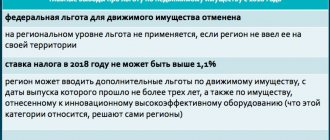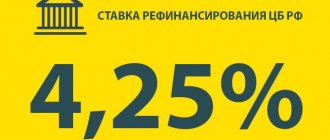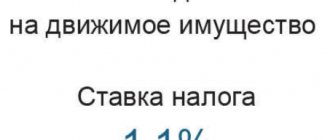The next Board of Directors of the Bank of Russia, held on December 18, 2020, decided to maintain the key rate at 4.25% per annum. This key rate will be in effect from July 27, 2021. — until February 12, 2021.
Inflation is higher than the forecast of the Bank of Russia and at the end of 2020 is expected to be in the range of 4.6–4.9%. One-time pro-inflationary factors have a more significant and lasting upward impact on prices against the backdrop of rising inflation expectations of households and businesses, as well as supply restrictions. The deterioration of the epidemic situation in Russia and in the world has a significantly less significant restraining effect on economic activity than in the second quarter. The situation in external financial and commodity markets has improved amid expectations of a faster global economic recovery due to progress in vaccine development. Disinflationary risks in 2021 no longer prevail to the extent they previously did, given the strengthening of short-term pro-inflationary factors and the risks of their longer-term effects.
According to the forecast of the Bank of Russia, under the current monetary policy, annual inflation will be 3.5–4.0% in 2021 and will be close to 4% in the future.
Key rate of the Bank of Russia for December 2021 - February 2021
At the next meeting of the Board of Directors of the Bank of Russia, held on December 18, 2021, it was decided to maintain the key rate at 4.25%.
This key rate will be valid from July 27, 2020 to February 12, 2021, i.e. before the date of the next meeting of the Board of Directors of the Bank of Russia.
The previous key rate of the Bank of Russia was 4.50% and its validity period lasted one month (from June 22, 2021 to July 26, 2020).
When deciding to maintain the key rate at 4.25% per annum, the Board of Directors of the Bank of Russia proceeded from the following:
Inflation dynamics.
Inflation is higher than the forecast of the Bank of Russia and at the end of 2020 is expected to be in the range of 4.6–4.9%. This is largely due to the effect of one-time pro-inflationary factors in individual markets and the continued transfer of the previous weakening of the ruble into prices. However, these factors may have a longer-term upward impact on prices against the backdrop of rising inflation expectations of households and businesses, as well as supply restrictions. In November, annual inflation increased to 4.4% (after 4.0% in October), and, as of December 14, it was estimated at 4.7%. Indicators of the current growth rate of consumer prices, reflecting the most stable processes of price dynamics, according to Bank of Russia estimates, also increased in November and were close to 4% in annual terms.The population's inflation expectations continued to rise, which is mainly due to rising prices for certain consumer goods and exchange rate volatility. Price expectations of enterprises have increased in previous months and remain at an elevated level, formed under the influence of rising costs. Professional analysts' expectations regarding inflation in the medium term are anchored around 4%.
Although the restraining influence of domestic demand on price dynamics remains, in the short term it is compensated by pro-inflationary factors. These include supply-side factors, including an emerging labor shortage in a number of specialties and additional costs for enterprises to comply with anti-epidemic standards, as well as secondary effects associated with rising inflation expectations. Under these conditions, the impact of one-time pro-inflationary factors on price dynamics may be longer-lasting. As their influence wanes, consumer price growth will slow. According to the forecast of the Bank of Russia, under the current monetary policy, annual inflation will amount to 3.5–4.0% in 2021 and will remain around 4% in the future.
Monetary conditions
in general, have not changed significantly since the previous meeting of the Board of Directors of the Bank of Russia. Loan and deposit rates have largely stabilized, and lending continued to expand. The change in OFZ yields for different periods was uneven. Yields on medium-term OFZ bonds decreased slightly as the situation in financial and commodity markets improved, including against the backdrop of expectations for a faster global economic recovery due to progress in creating vaccines. Along with soft monetary conditions, the dynamics of lending are influenced by preferential programs of the Government, as well as regulatory easing. When making decisions on the key rate, the Bank of Russia will assess how much the termination of these anti-crisis measures will affect monetary conditions.
Economic activity.
Current indicators of economic activity indicate a pause in economic recovery in the fourth quarter. However, the deterioration of the epidemic situation in Russia and in the world has a significantly less significant restraining effect on the economy than in the second quarter. This is due to the targeted nature of restrictive measures and the adaptation of citizens and enterprises to new conditions. Taking this into account, as well as higher-than-expected data for the third quarter, the decline in GDP in 2021 could be about 4%.
In the spring of 2021, a steady resumption of growth in the Russian economy is expected as the morbidity situation normalizes. The medium-term trajectory of economic growth will be significantly influenced by the dynamics of the coronavirus pandemic in Russia and in the world, the nature of the recovery in private demand in the face of possible changes in the behavior of the population and business, as well as the upcoming fiscal consolidation. Loose monetary policy will continue to support the economy next year.
Inflation risks.
Disinflationary risks in 2021 no longer prevail to the same extent as they previously did, given the strengthening of short-term pro-inflationary factors and the risks of their longer-term effect in the face of rising inflation expectations and associated secondary effects.
Short-term pro-inflationary risks are also associated with increased volatility in global markets, including under the influence of various geopolitical events, which may affect exchange rate and inflation expectations. Temporary difficulties in production and logistics chains, as well as additional costs for enterprises associated with protecting workers and consumers from the threat of the spread of coronavirus, may put upward pressure on prices. Pro-inflationary risks are created by the dynamics of domestic prices for certain food products under the influence of supply-side factors and the conditions of the relevant world markets.
Disinflationary risks for the base scenario are mainly associated with the further development of the situation with the coronavirus pandemic in Russia and in the world, the scale of possible measures to combat it and their impact on economic activity, as well as the speed of economic recovery and household incomes. Sustained changes in the preferences and behavior of the population, including a possible sustained increase in the propensity to save, may also have a moderating effect on inflation dynamics.
Uncertainty remains regarding the long-term structural consequences of the coronavirus pandemic for the Russian and global economies, in particular the scale of the decline in the potential of the Russian economy. Geopolitical factors, including worsening trade tensions, can also have a significant impact on the potential for global growth. The scale of deviation of the Russian economy from potential, in turn, is a determining factor for the medium-term dynamics of inflation.
Budget policy significantly influences the medium-term dynamics of inflation. In the base scenario, the Bank of Russia proceeds from the trajectory of fiscal policy reflected in the Main Directions of Budget, Tax and Customs Tariff Policy for 2021 and for the planning period of 2022 and 2023, as well as the stated deadlines for completing anti-crisis measures of the Government and the Bank of Russia.
Taking into account the high heterogeneity of current trends in the economy and price dynamics, the Bank of Russia will assess further developments of the situation and the potential for an additional reduction in the key rate. The Bank of Russia will make decisions on the key rate taking into account the actual and expected dynamics of inflation relative to the target, economic development over the forecast horizon, as well as assessing risks from internal and external conditions and the reaction of financial markets to them.
The next meeting of the Board of Directors of the Bank of Russia, at which the issue of the level of the key rate will be considered, is scheduled for February 12, 2021.
The time for publishing a press release on the decision of the Board of Directors of the Bank of Russia is
13:30 Moscow time
.
What does a key rate reduction affect?
The key rate may decrease if the inflation rate decreases and in general against the backdrop of a favorable economic situation.
This contributes to the growth of business activity due to the reduction in the cost of borrowed funds. Representatives of the corporate sector are more actively attracting loans and investing the received resources in the real sector of the economy, as well as in its other areas.
The population takes out loans for consumer purposes, solving housing problems, for the purchase of vehicles, treatment, recreation, etc. This is an additional stimulating factor for the economy, since manufacturers of goods and service providers receive motivation to increase their presence in the market.
On the other hand, a decrease in the key rate leads to a decrease in the attractiveness of bank deposits for private clients, representatives of the corporate sector and the financial and credit market.
In such a situation, it is important to anticipate the likelihood of a decrease in the volume of cash flows to banks and, accordingly, a reduction in their resource base. Financial institutions should take care of replenishing liquidity in advance.
Dynamics of the key rate of the Central Bank of the Russian Federation for 2013 - 2021 and beyond...
The key rate was declared as the main instrument of monetary policy from September 13, 2013. From this date until the end of 2013, it was 5.50% per annum, inflation at the end of 2013 was 6.45%.
In 2014, the key rate changed 6 times, all in the direction of growth. Russia ended 2014 with the Central Bank key rate of 17.00%. A sharp increase in the key rate to 17.00% per annum occurred on December 16, 2014. The Board of Directors of the Bank of Russia noted that this decision was due to the need to limit devaluation and inflation risks that have significantly increased recently. Inflation at the end of 2014 was 11.36%.
2015, which began with a rate of 17% per annum, continued with its gradual decrease. During 2015, there were 5 changes in the key rate, and there were 6 rates during the year. The year ended with the key rate at 11.00%. Inflation at the end of 2015 was 12.90%.
During January - June 2021, the Bank of Russia periodically decided to maintain the key rate in force since 2015 at 11.0% per annum, from June 14 - reduced it to 10.50%, and from September 19, 2016, reduced it to - 10. 00%. At the end of 2021, the key rate was kept at 10.00%. Inflation at the end of 2021 was 5.4%.
Since the beginning of 2021, the key rate by the Bank of Russia has been maintained at 10.00%, and from the second quarter it began to be systematically lowered. During 2021, the key rate changed 6 times and decreased from 10.00% to 7.75% by the end of the year. Inflation in Russia for 2021 amounted to 2.5%.
At the beginning of 2021, the key rate of the Bank of Russia was 7.75% per annum, from 02/12/2018 it was reduced to 7.50%., from March 26, 2021 it was reduced to 7.25% per annum, and from 09/17/2018 it was increased to 7 ,50%. From December 17, 2018, the rate was again increased to 7.75% and returned to the rate in force at the beginning of the year. The key rate of 7.75% will be valid until March 22, 2021.
From the beginning of 2021, the Bank of Russia rate was 7.75% per annum, from June 17, 2021 - 7.50%, from July 29, 2021 - 7.25%, from 09/09/2019 - 7.00%, from 10/28/2019 year - 6.50%, and from December 16, 2019 - 6.25% and which will still be valid until February 7, 2021. The dynamics of the Bank of Russia key rate in 2021 are impressive, since during the year it has changed for the sixth time. The overall decrease for the year was 1.50 percentage points.
Since the beginning of 2021, the key rate of the Bank of Russia has been 6.25% per annum, and from 02/10/2020 it is 6.00%, from 04/27/2020. - 5.50%, from June 22, 2020 - 4.50%, and from July 27, 2020 - 4.25%. This is the fifth and final rate change in a year.
From the beginning of 2021, the key rate is 4.25%.
What does the key rate depend on?
When determining the size of the key rate, the Board of Directors of the Central Bank takes into account the following factors and circumstances:
- general level of business and economic activity;
- the rate of inflation in the previous period;
- volatility in the stock, foreign exchange and commodity markets;
- the degree of inflation risks and the presence of devaluation expectations on the part of citizens, representatives of the monetary market and the corporate sector.
The key rate is put into effect at the legislative level. It remains relevant until the regulator’s decision on its next change comes into force.
Table of dynamics (changes) of the key rate of the Central Bank of the Russian Federation for 2013 - 2021
The table shows the dynamics (changes) of the Bank of Russia key rate since its introduction (since September 13, 2013):
| Bet validity period | Bank of Russia key rate (%) |
| from July 27, 2021 to February 12, 2021 (date to be confirmed) | 4,25 |
| from June 22, 2021 to July 26, 2021 | 4,50 |
| from April 27, 2021 to June 21, 2021 | 5,50 |
| from February 10, 2021 to April 26, 2021 | 6,00 |
| from December 16, 2021 to February 09, 2021 | 6,25 |
| from October 28, 2021 to December 15, 2021 | 6,50 |
| from September 09, 2021 to October 27, 2021 | 7,00 |
| from July 29, 2021 to September 08, 2021 | 7,25 |
| from June 17, 2021 to July 28, 2021 | 7,50 |
| from December 17, 2021 to June 16, 2021 | 7,75 |
| from September 17, 2021 to December 16, 2021 | 7,50 |
| from March 26, 2021 to September 16, 2021 | 7,25 |
| from February 12, 2021 to March 25, 2021 | 7,50 |
| from December 18, 2021 to February 11, 2021 | 7,75 |
| from October 30, 2021 to December 17, 2021 | 8,25 |
| from September 18, 2021 to October 29, 2021 | 8,50 |
| from June 19, 2021 to September 17, 2021 | 9,00 |
| from May 02, 2021 to June 18, 2021 | 9,25 |
| from March 27, 2021 to May 1, 2021 | 9,75 |
| from September 19, 2021 to March 26, 2021 | 10,00 |
| from June 14, 2021 to September 18, 2021 | 10,50 |
| from August 3, 2015 to June 13, 2021 | 11,00 |
| from June 16, 2015 - to August 02, 2015 | 11,50 |
| from May 05, 2015 – June 15, 2015 | 12,50 |
| from March 16, 2015 to May 04, 2015 | 14,00 |
| from February 2, 2015 to March 15, 2015 | 15,00 |
| from December 16, 2014 to February 1, 2015 | 17,00 |
| from December 12, 2014 to December 15, 2014 | 10,50 |
| from November 5, 2014 to December 11, 2014 | 9,50 |
| from July 28, 2014 to November 4, 2014 | 8,00 |
| from April 28, 2014 to July 27, 2014 | 7,50 |
| from March 03, 2014 to April 27, 2014 | 7,00 |
| from September 14, 2013 to March 02, 2014 | 5,50 |
What does an increase in the key rate affect?
This measure is taken by the regulator during periods of financial instability or a high probability of its occurrence. Depending on the specific circumstances, the following tasks can be solved:
- normalization of the situation with prices on the consumer market (prevention of growth);
- reducing the intensity of inflationary processes;
- suppression of high devaluation expectations among the population, representatives of the corporate sector, as well as among banks (increasing the key rate prevents their intentions to take out cheap ruble loans and wait for their subsequent depreciation in the event of devaluation);
- maximum stabilization of the situation in the financial market.
An example of a successful increase in the key rate to normalize the financial situation in Russia is the actions of the regulator in December 2014. Initially, it was increased from 9.5 to 10.5 per annum, and when it became obvious that this measure was not enough to stop the devaluation processes, a few days later the rate was sharply raised to 17% per annum. Thanks to decisive actions, it was possible to quickly dampen the volatility in the foreign exchange market.
Using the key rate, you can influence the exchange rate of the dollar and other currencies against the Russian ruble.
Meeting schedule 2021
The Bank of Russia plans to hold eight meetings of the Board of Directors of the Central Bank on the key rate in 2021 in accordance with the following schedule:
- February 12, 2021,
- March 19, 2021,
- April 23, 2021,
- June 11, 2021,
- July 23, 2021,
- September 10, 2021,
- October 22, 2021,
- December 17, 2021.
Meetings of the Board of Directors of the Bank of Russia on February 12, April 23, July 23 and October 22 are key. Based on the results of these meetings, the press release on the key rate will include a table with an updated medium-term macroeconomic forecast. The report on monetary policy will be published a week after the indicated meetings of the Board of Directors of the Bank of Russia (on the sixth working day). All meetings of the Board of Directors will be accompanied by a press conference by the Chairman of the Bank of Russia.
The expected time of publication of press releases on the decision of the Board of Directors of the Bank of Russia on the key rate is 13:30 Moscow time.
Press release on the Central Bank website: https://www.cbr.ru/press/pr/?file=10092020_130000PR2020-09-10T12_46_47.htm
The difference between the key rate and the refinancing rate
The refinancing rate was one of the most important indicators of monetary policy until 2021. After the specified date, it was equalized with the key rate. From this moment on, the refinancing rate is not separately calculated or approved - it automatically changes its value along with changes in the key rate.
In fact, the refinancing rate has lost its significance and is applied by inertia, since this term is present in many legislative acts. It continues to be used to calculate the amounts of penalties and fines; it is indicated in some loan agreements and when drawing up other documents. Figuratively speaking, this is a “double” of the current key rate.
Legal refusal of the refinancing rate will be possible only after appropriate changes are made to all regulatory documents where it is mentioned.
Source of information: Bank of Russia
How the decision to change is made
Changing the key rate is the main instrument of the Central Bank’s monetary policy. Monetary policy is also called monetary policy. With its help, the Central Bank creates conditions for economic development.
Monetary policy itself does not develop or slow down the country's economy , but it does affect demand. If demand increases, labor productivity increases and technology develops. If demand decreases, labor productivity decreases and there is not enough money for technology. Monetary policy can be expansionary, contractionary or neutral.
Expansionary monetary policy is used if the economy slows and inflation is below target. During the stimulus policy, the Central Bank lowers the key rate so that inflation rises and the economy revives.
Contractionary monetary policy is applied if the economy is “overheated” and inflation is above the target level . In this case, the Central Bank raises the key rate to reduce inflation.
With a neutral policy, the key rate is kept for a long time at the level that the Central Bank considers most suitable for the economy. The rate itself does not change so that the economy remains in equilibrium.
The Central Bank makes decisions on changing the key rate based on the macroeconomic forecast and takes into account many factors: changes in taxes and the economy, the situation on world markets, statistical data. The change in the key rate affects the economy gradually over several quarters.
The Central Bank publishes monetary policy reports on its website to explain why it is changing the key rate and what further actions it will take.
Its meetings are scheduled for all 12 months. That is, the schedule for 2021 has been developed in advance. You could see it above.
It is important to note that meetings of the Board of Directors do not always take place according to schedule. They may be unplanned.
In particular, such an exceptional case was recorded in 2014. When the key rate was urgently raised by 6.5 percentage points.
After this, a gradual decline has been observed since 2015. The regulator reduced it without sudden jerks. Mostly by 0.25-0.5%. Although with a slight fluctuation at the end of 2021, the downward trend in rates continued into 2021.
Key bet in business: basic knowledge
A change in the key rate entails not only a change in lending and investment conditions. There are a number of business issues that are related to the value of the key rate. Let's talk about them. In this case, in our calculations we will take into account the key rate effective from September 18, 2021 – 8.5 percent. Therefore, keep in mind that you may need to use a different key rate figure in your calculations.
Non-payment of wages: compensation
If an employer fails to pay employees wages (vacation pay or dismissal pay) on time, then the employees are entitled to compensation for the delay. This is provided for in Article 236 of the Labor Code of the Russian Federation. The amount of compensation for delayed wages is determined in the collective or labor agreement. If the amount of compensation is not established by an employment or collective agreement, then it is calculated based on 1/150 of the key rate for each day of delay. Compensation for delayed wages is calculated using the formula:
Let's assume that the amount of salary arrears amounted to 590,000 rubles. The delay period is 32 days. During the delay, the key rate was in effect - 8.50%. To calculate compensation, wage arrears must be multiplied by 1/150 of the key rate and the number of days of delay. Accordingly, compensation for each day will be 10,698.67 rubles. (RUB 590,000 × 8.50% / 150 × 32).
Penalties: taxes and fees
The amount of penalties that must be paid in case of untimely transfer of taxes or insurance contributions to the budget depends on the size of the key rate. By the way, from October 1, the procedure for calculating tax penalties (for delays in paying taxes and contributions transferred to the Federal Tax Service) is changing. Thus, for debts arising from October 1, 2017, their rate depends on the number of days of delay:
- in case of delay of up to 30 calendar days inclusive, penalties are calculated based on 1/300 of the Central Bank refinancing rate, which is equal to the key rate;
- in case of delay of more than 30 calendar days: for the first 30 days based on 1/300 of the rate, and for subsequent days - based on 1/150 of the rate.
Please note: the new procedure applies only to organizations - individual entrepreneurs and individuals pay penalties based on 1/300 of the rate, regardless of the period of delay.








